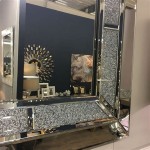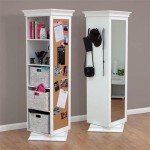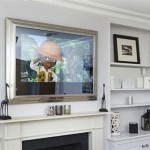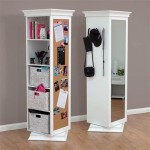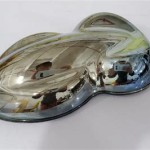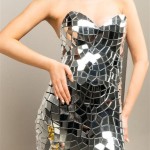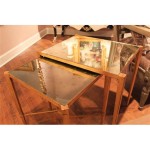Concave Mirrors in Headlights of Cars
Automotive headlights represent a critical safety feature, enabling visibility in low-light conditions. The effective projection of light relies heavily on the principles of reflection and the strategic use of mirrors within the headlight assembly. Concave mirrors, with their inherent ability to focus light, play a crucial role in shaping and directing the beam emitted by the headlight bulb.
Key Properties of Concave Mirrors
Concave mirrors possess a reflecting surface that curves inward, resembling a portion of a sphere. This unique shape allows them to converge incoming light rays towards a focal point. The position of the focal point, along with the mirror's curvature, determines how the light is reflected and ultimately projected from the headlight. Understanding these properties is crucial for optimizing headlight performance.
The Role of Concave Mirrors in Headlights
Within a headlight assembly, the concave mirror is strategically positioned to collect light emitted from the bulb. The mirror's reflective surface captures light radiating in various directions and redirects it forward. This process concentrates the light, enhancing the intensity and reach of the headlight beam. The precise curvature of the mirror determines the beam pattern, influencing factors such as spread and focus.
Types of Concave Mirrors Used in Headlights
Several types of concave mirrors find application in headlights. Parabolic reflectors, a specific type of concave mirror, are commonly used due to their ability to create a parallel beam of light, minimizing light scatter and maximizing projection distance. Spherical reflectors, another type of concave mirror, offer a cost-effective solution, though they may exhibit some degree of spherical aberration, slightly distorting the beam. Ellipsoidal reflectors are also employed, particularly in projector-style headlights, offering enhanced control over beam shaping.
Advantages of Using Concave Mirrors
The incorporation of concave mirrors in headlight design offers significant advantages. They improve light collection efficiency, ensuring that a larger portion of the light emitted by the bulb is directed forward. This leads to increased brightness and visibility. Concave mirrors provide control over beam pattern, enabling precise shaping and direction of the light beam for optimal illumination. Furthermore, they are relatively simple to manufacture and integrate into headlight assemblies.
Challenges and Considerations in Concave Mirror Design
While concave mirrors offer numerous benefits, certain challenges must be addressed in their design. Spherical aberration, inherent in spherical reflectors, can cause slight blurring of the beam. Precise manufacturing and alignment are crucial to ensure optimal performance and avoid uneven light distribution. The reflectivity of the mirror surface degrades over time due to environmental factors, requiring careful material selection and protective coatings to maintain long-term performance.
Evolution of Concave Mirror Technology in Headlights
Headlight technology has evolved significantly over time, and concave mirror design has followed suit. Early headlights utilized simple spherical reflectors. Advances in manufacturing processes enabled the production of more complex parabolic and ellipsoidal reflectors, leading to improved beam control and efficiency. Modern headlight systems often incorporate freeform reflectors – complex, non-symmetrical shapes – enabling intricate beam patterns tailored to specific driving conditions and vehicle types.
Comparison with Other Headlight Technologies
While concave mirrors remain a prevalent technology in headlight systems, alternative approaches exist. LED headlights, which utilize light-emitting diodes as the light source, are becoming increasingly common. These often employ lenses and reflectors in conjunction with LEDs to shape and direct the light beam. Laser headlights, a relatively new technology, offer extremely high intensity and long-range projection. These systems typically utilize mirrors and lenses to manage the laser beam, ensuring safe and effective illumination.
Future Trends in Concave Mirror Application in Headlights
The ongoing evolution of headlight technology continues to influence concave mirror design. Adaptive Driving Beam (ADB) systems, which dynamically adjust the headlight beam based on driving conditions and surrounding traffic, are gaining prominence. These systems utilize intricate combinations of mirrors, lenses, and actuators to control light distribution, enhancing safety and visibility. Further advancements in materials science and manufacturing processes are expected to lead to even more sophisticated and efficient concave mirror designs, optimizing headlight performance and contributing to safer driving experiences.

Car Headlights
Flashlights And Car Headlights All Have Concave Mirrors Why Would It Not Be A Good Idea To Use Convex Mirror Instead Quora

How A Concave Mirror Is Used In Headlights And Searchlights To Throw Light At Long Distance Homework Study Com

Why Headlights Used Concave Mirror

Which Mirror Is Used In The Headlights Of A Car

Cars Advice Guides Which Land Rover Car Headlights Sports Luxury

Spherical Mirror Structure Types Terminologies

Why Headlights Used Concave Mirror

State The Type Of Mirrors Used For I Headlights And Ii Rearview In Cars Motorcycles Give Reason To Justify Your Answer Each Case

Why Are Concave Mirrors Used In Headlights Socratic

